Potsdam in Brandenburg is a treasure trove of the region’s history and culture, attracting tourists from all over the world with its baroque palaces, beautiful gardens and interesting museums. As the former residence of Prussian kings, Potsdam is proud of its heritage, which has been designated a UNESCO World Heritage Site.
One of the main attractions of Potsdam is the Sanssouci palace and park complex, which was the summer residence of King Frederick the Great. The Sanssouci Gardens, with their wine terraces, fountains and sculptures, are a great place for a relaxing stroll. Another important place on the map of Potsdam is the New Palace (Neuer Palais), an impressive example of Prussian Baroque and Rococo, which impresses with its rich decoration and monumental size. It is also worth visiting Babelsberg Park with its romantic palace and picturesque views of the Havel River.
New Palace in Potsdam
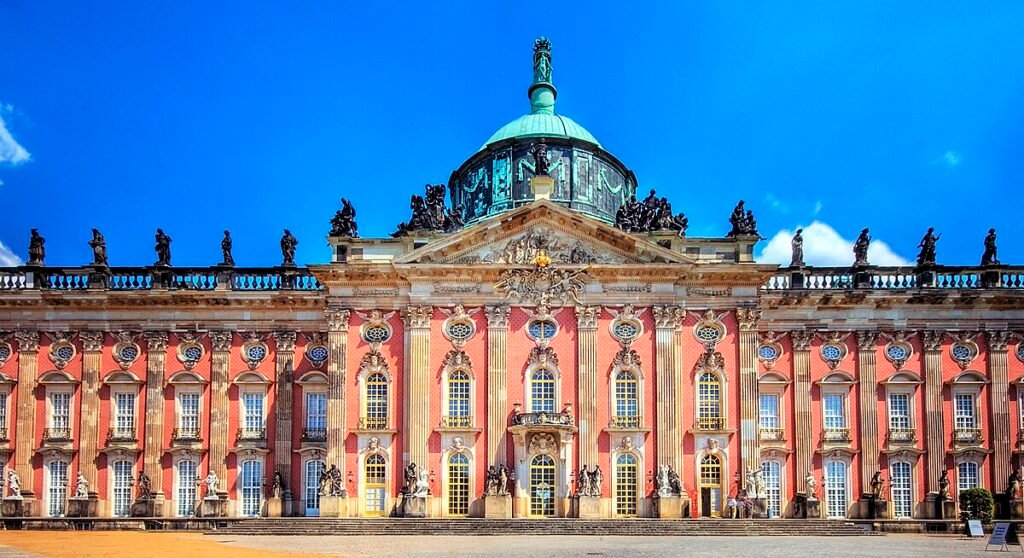
New Palace – a baroque palace in the western part of Sanssouci Park . Built in 1763-69 on the platform of King Frederick II of Prussia. Originally a guest house, in the years 1871-1918 it served as an imperial residence.
The king rarely stayed here. Instead the palace was mostly used as guest apartments and for celebrations. The recently restored Lower Royal Suite, with its Braided Room, Concert Room, and Oval Cabinet, presents one of Europe’s most luxurious interior décors. Later, William II, the last German emperor, and his family used the New Palace as their preferred place of residence. The New Palace, with over 200 rooms, is the last royal residence Frederick the Great built in his park.
Cecilienhof Palace
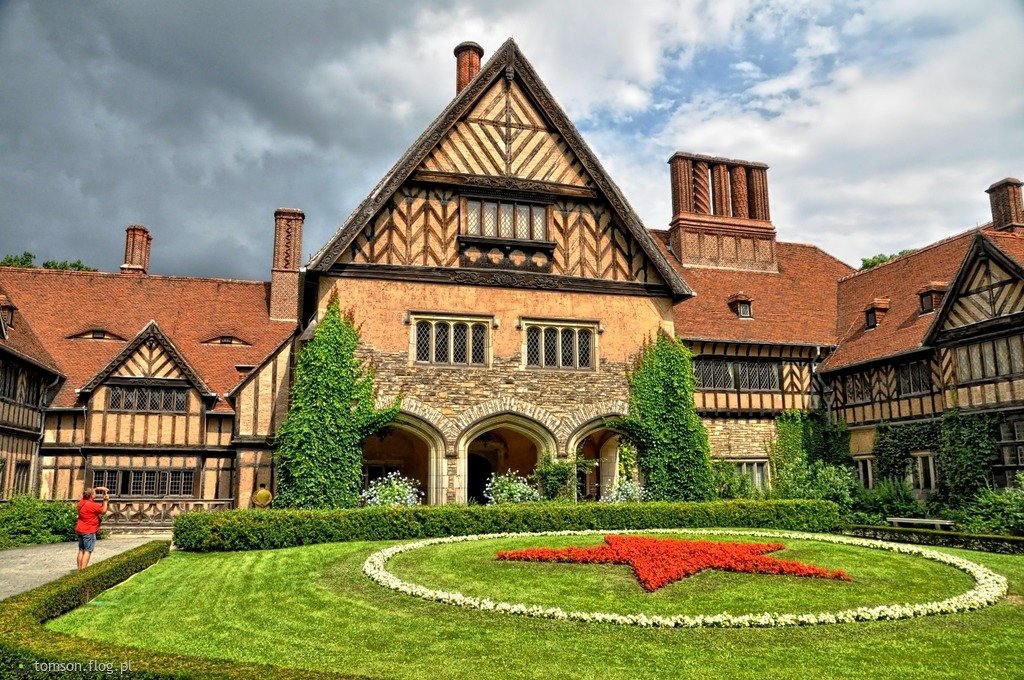
Churchill, Truman and Stalin wrote world history in Cecilienhof Country House. They met here in summer 1945 for the Potsdam Conference and sealed the fate of Germany and Europe. The house was built between 1913 and 1917 in the style of an English country house. Kaiser Wilhelm II had it built for his first-born son, Crown Prince Wilhelm, and his wife Cecilie.
After the collapse of the monarchy, Wilhelm was allowed to return to Potsdam in 1923 and was granted the right of residence for life in the palace, which had meanwhile been expropriated by the state. At the end of the Second World War, the former Crown Prince and his family fled from the approaching Red Army. Today, the palace houses a historical memorial, where the conference rooms and workrooms of the participants of the Potsdam Conference can be visited.
Sanssouci Palace And Sanssouci Park
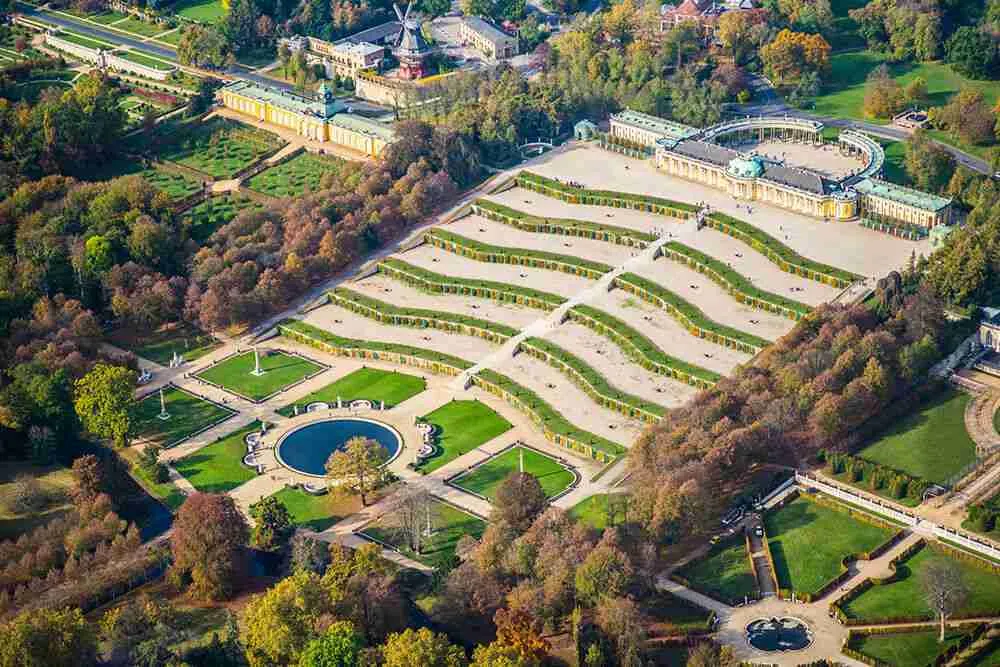
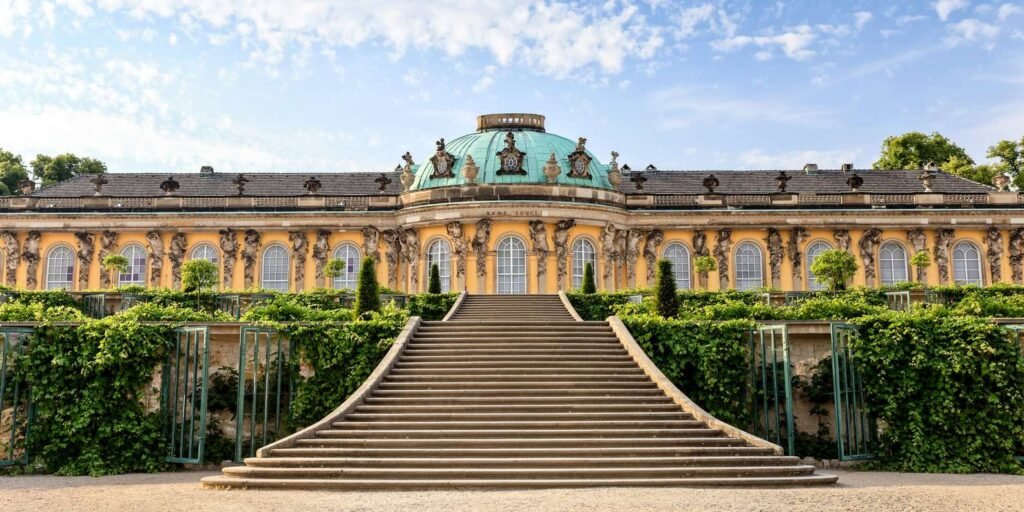
The main attraction of Potsdam is Sanssouci Park with its magnificent Palace. Built between 1745 and 1747, the palace is the radiant centerpiece and highlight of the entire Sanssouci Park complex. Its majestic presence attracts tourists from near and far and is an integral part of the UNESCO World Heritage Site.
Immerse yourself in a fascinating journey back in time and discover the wonderful history and architecture of Frederick II’s summer palace. Enjoy the unique atmosphere and picturesque surroundings of Sanssouci Park, which guarantees an unforgettable experience thanks to its artistic gardens and other attractions. Discover wonderful interiors, stroll through charming gardens and be inspired by the beauty of past eras.
The entire complex consists of: Neptune’s Grotto, Neue Kammern Palace, Painting Gallery, Chinese Pavilion, Antikentempel, Temple of Friendship, New Palace Obelisk, Belvedere on the Klausberg hill, Charlottenhof Palace, Roman baths, Church of Peace, New Orangery
Chinese House in Sanssouci Park
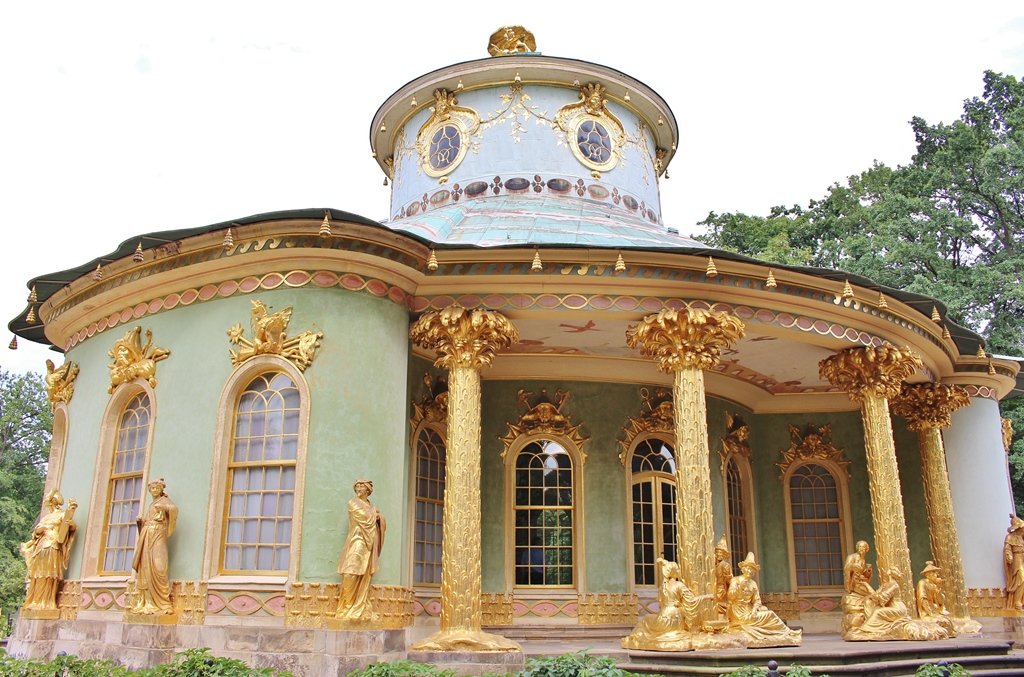
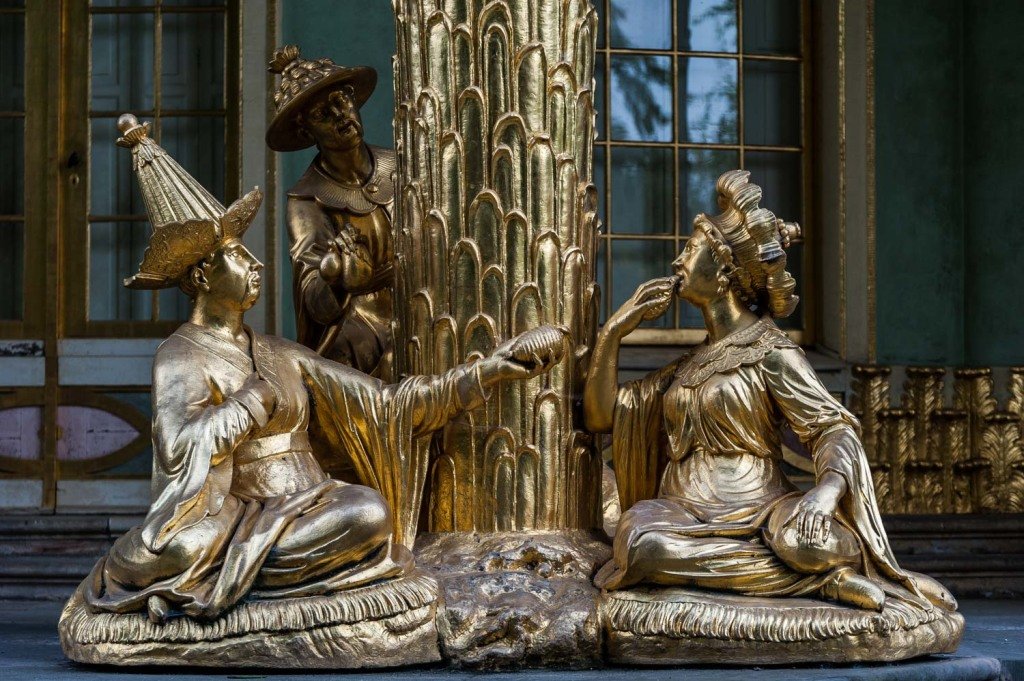
The beautifully decorated Chinese House in the deer garden of Sanssouci Park is an impressive example of the Chinoiserie fashion that shaped court culture throughout Europe in the 18th century. The external appearance of the pavilion is dominated by life-size gilded figures, placed individually or in groups around the building. Inside, the Chinese House impresses with a large ceiling painting depicting vibrant Chinese society.
Belvedere on the Pfingstberg hill
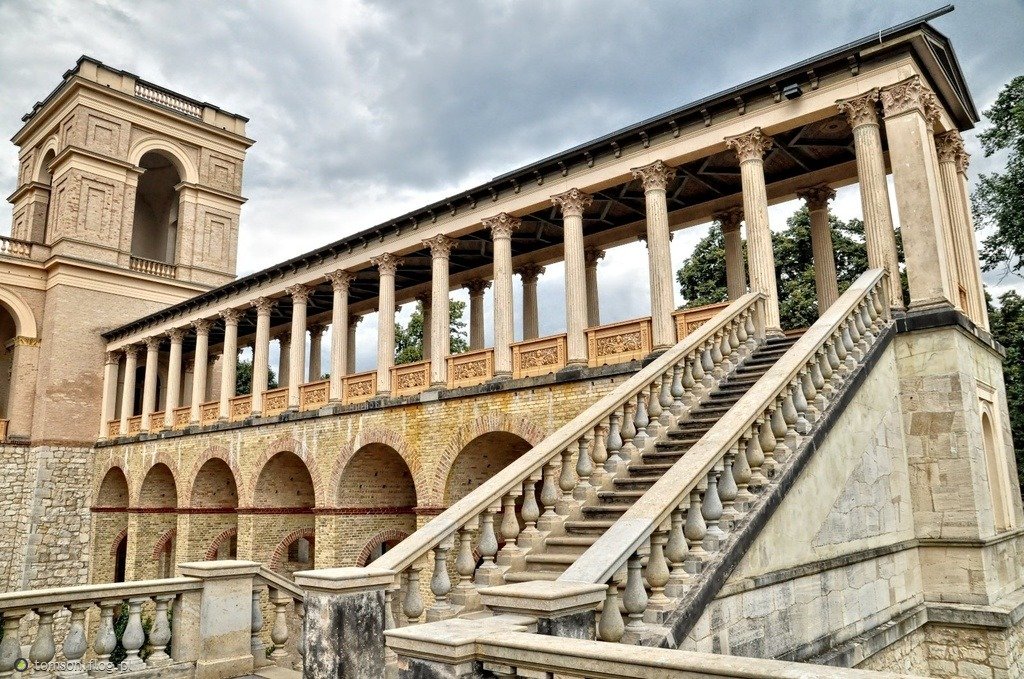
Structure located on the top of the Pfingstberg hill, the castle gives great views of the surrounding area and occasionally holds concertsThe Pfingstberg Hill has been crowned with one of the most beautiful examples of 19th century stately architecture: the Belvedere. Nearby the Pomona-Temple, the first work of C.F. Schinkel, and the garden, designed by Peter Joseph Lenné, are worth visiting. Here you will find the green parks, the pompous palaces and the baroque city centre framed by the idyllic river landscape lying to your feet.
Brandenburg Gate in Potsdam
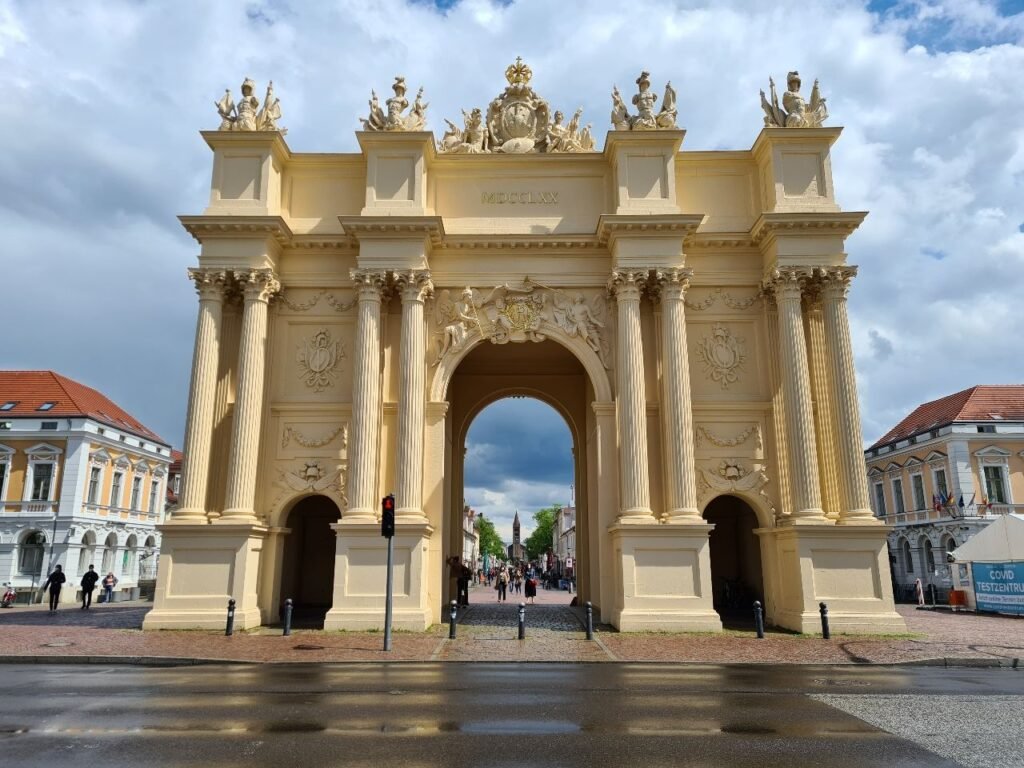
Brandenburg Gate – a classicist city gate located in Potsdam, at Luisenplatz square, at the western end of Brandenburger Straße. Together with the Hunting Gate and the Nauen Gate, it is one of the three preserved city gates in Potsdam.

Marmorpalast in Potsdam
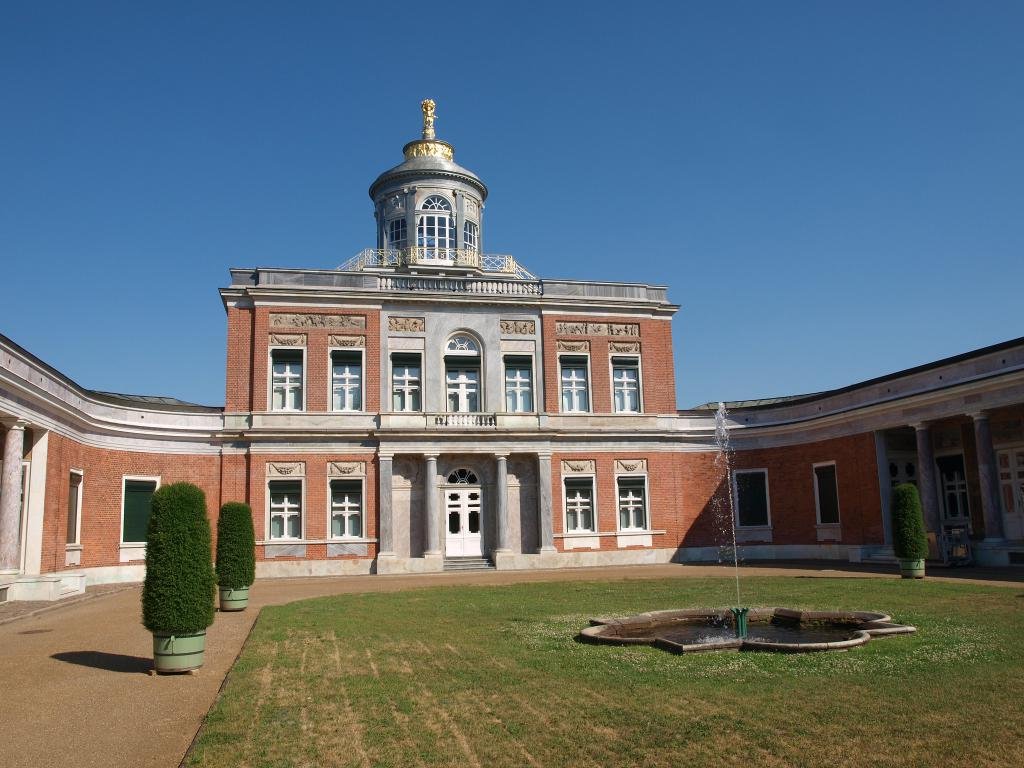
The Marmorpalais, known in English as the Marble Palace, was a royal residence built on the shores of Lake Heiliger in the New Garden. The Marble Palace was commissioned by King Frederick William II as the summer residence of the Hohenzollern family. The palace was significantly damaged during World War II. At that time, it no longer served as a palace and continued to fall into ruin. The renovation project began in 1988. It was only completed in 2009. The Marble Palace was inscribed on the UNESCO World Heritage List in 1990.
Babelsberg Palace and Park
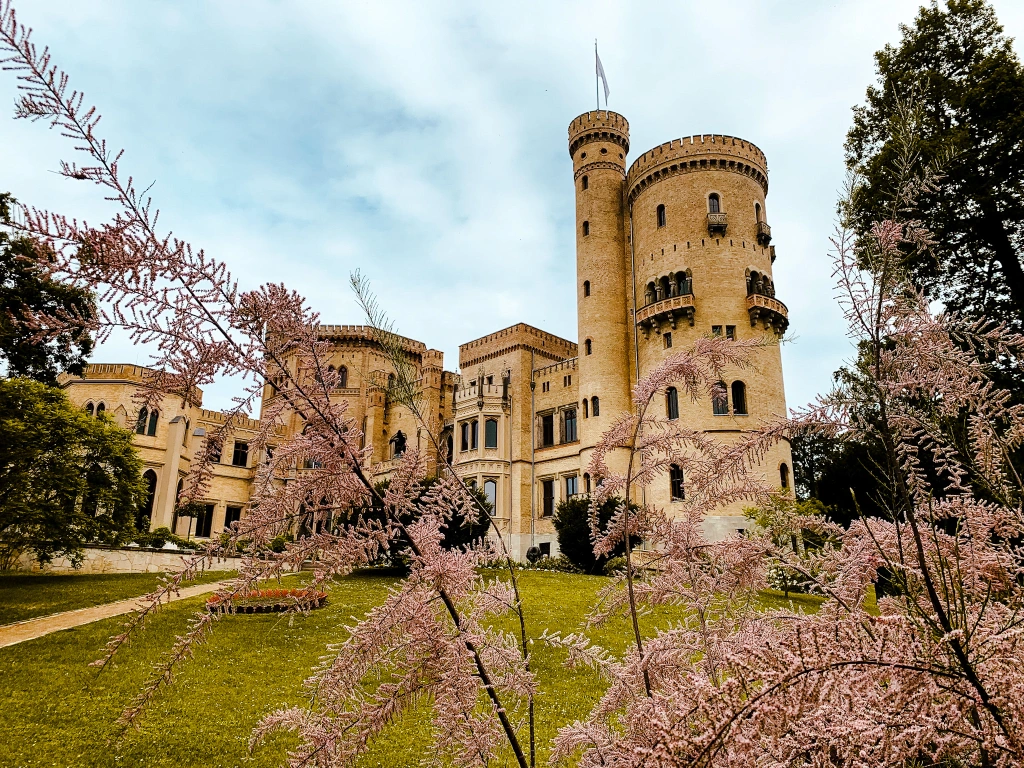
Built in the English neo-Gothic style, Babelsberg Palace is located in Babelsberg Park on the banks of the river Havel. Babelsberg Palace and its park were built for Prince William of Prussia and his wife Princess Augusta of Saxony-Weimar.
Today, Babelsberg Palace, situated on the border of Berlin and Potsdam on the banks of the Havel, together with the park planned by Peter Joseph Lenné is a UNESCO World Heritage Site and destination for visitors from around the world.
The Russian Colony Alexandrowka
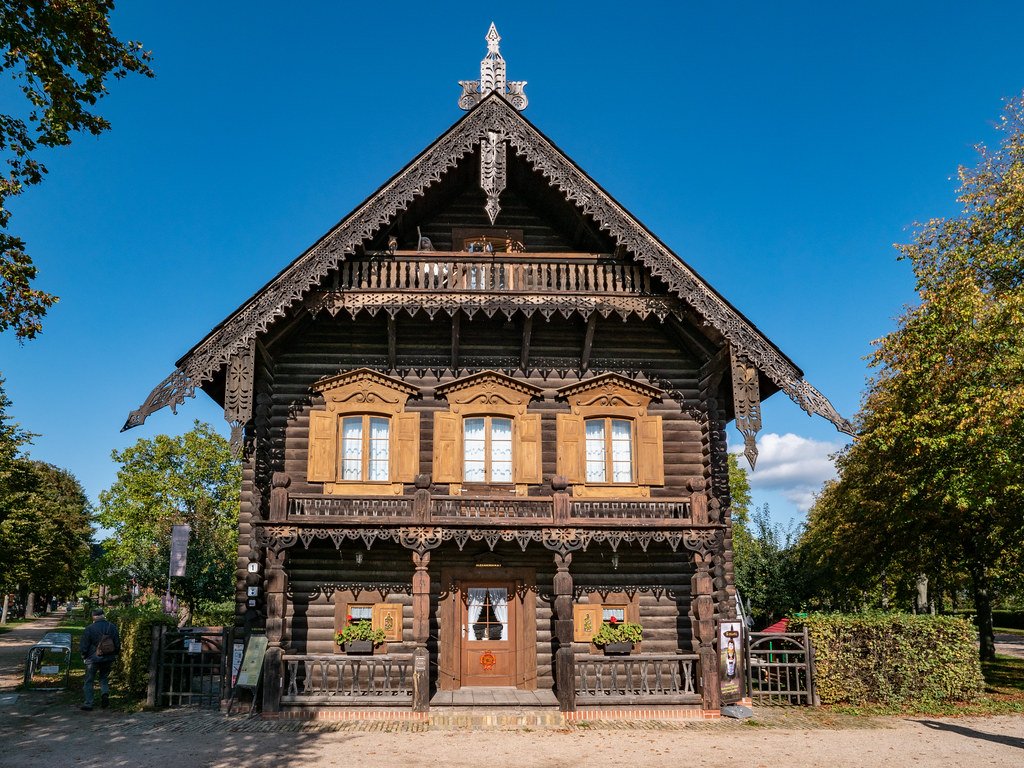
The Russian Colony Aleksandrówka is a historic settlement in Potsdam, consisting of thirteen wooden houses built in the Russian style. The colony was intended for Russian singers of the 1st Prussian Guard Regiment. The picturesque ensemble, designed by architect Peter Joseph Lenné, is located in the north of Potsdam and is now part of the UNESCO World Heritage Site that includes the palaces and parks of Sanssouci.
Aleksandrówka’s houses and surrounding gardens are characterized by typical Russian architectural elements with richly carved window frames and wooden facades. There is also an Orthodox chapel on the premises, which was consecrated in 1829. Today, Aleksandrówka is not only a residential district, but also a cultural center where various events and exhibitions are held, protecting the Russian-German heritage and promoting cultural exchange.
Glienicker Brücke
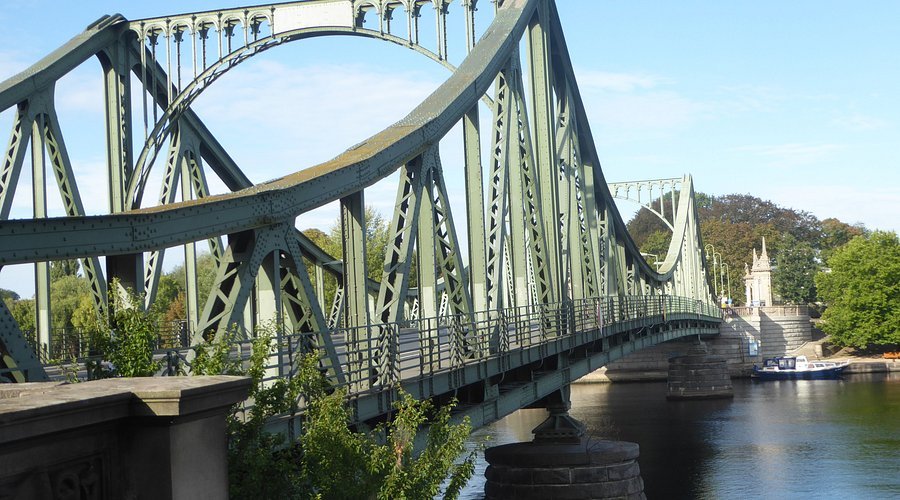
The border between West Berlin and the GDR once ran through the famous Glienicker Brücke (spy bridge). There were three exchanges of spies between the then powers on the bridge connecting Potsdam with Berlin. The transfer of secret agents between the United States and the Soviet Union was even the main theme of the movie Bridge of Spies starring Tom Hanks. The Glienicke Bridge is located in the middle of the park landscape. From here the view extends to Babelsberg Castle and Park, the Church of the Savior in Sacrow and Glienicke Castle. Today’s bridge dates back to 1907.
Museum Barberini
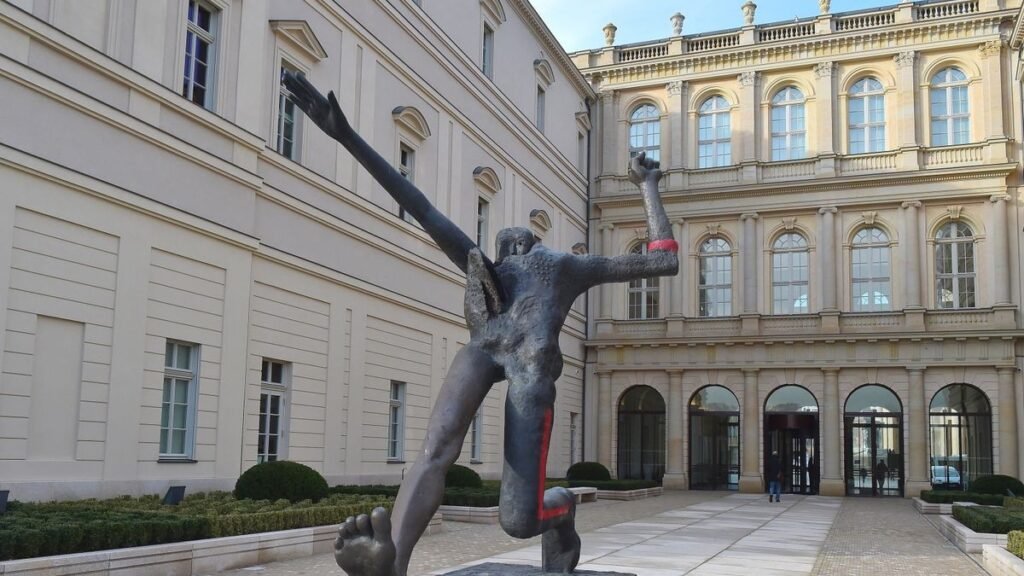
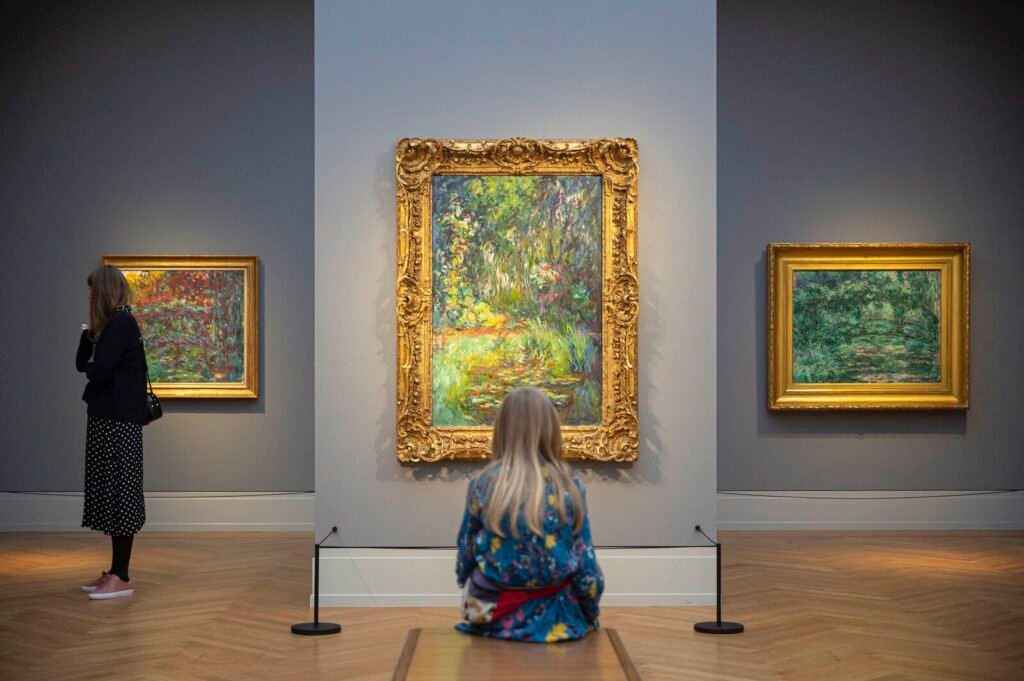
The Barberini Museum is the art museum in Potsdam’s historic center. The collection includes masterpieces by Claude Monet, Pierre-Auguste Renoir, Berthe Morisot, Gustave Caillebotte and Paul Signac. With 34 paintings by Claude Monet, nowhere in Europe outside of Paris are there more works by this artist gathered in one place. Potsdam is one of the world’s most important centers of impressionist landscape painting.
Church of Saint Nicholas
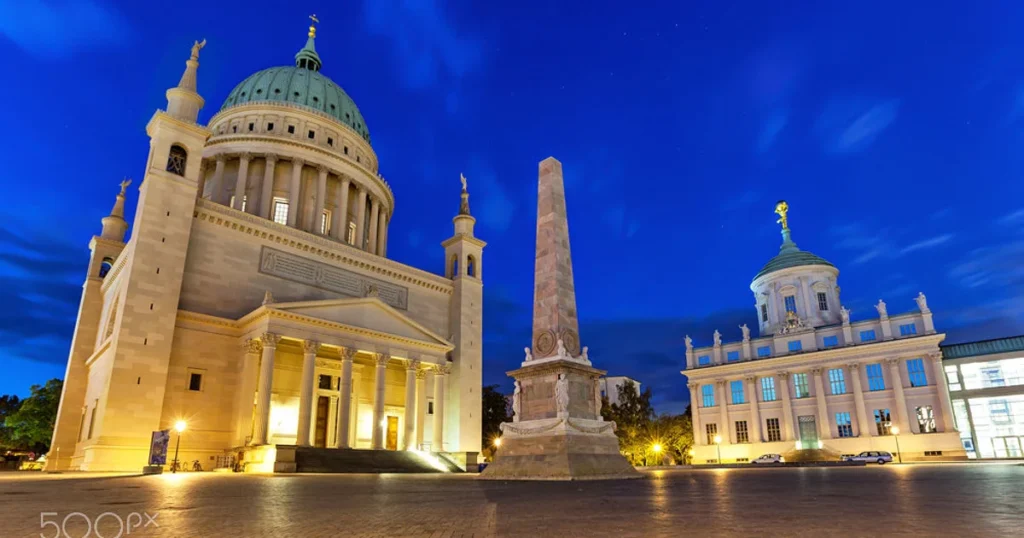
Saint Nicholas’ Church in Potsdam is a prominent Lutheran church situated on the Old Market Square (Alter Markt). Constructed between 1830 and 1837 to replace the original Saint Nicholas Church, which had burned down in 1795.
The interior of the church reaches a height of 52 meters (171 feet), and the church’s distinctive dome has become a recognizable landmark visible throughout city.
Biosphäre Potsdam – Botanical Garden
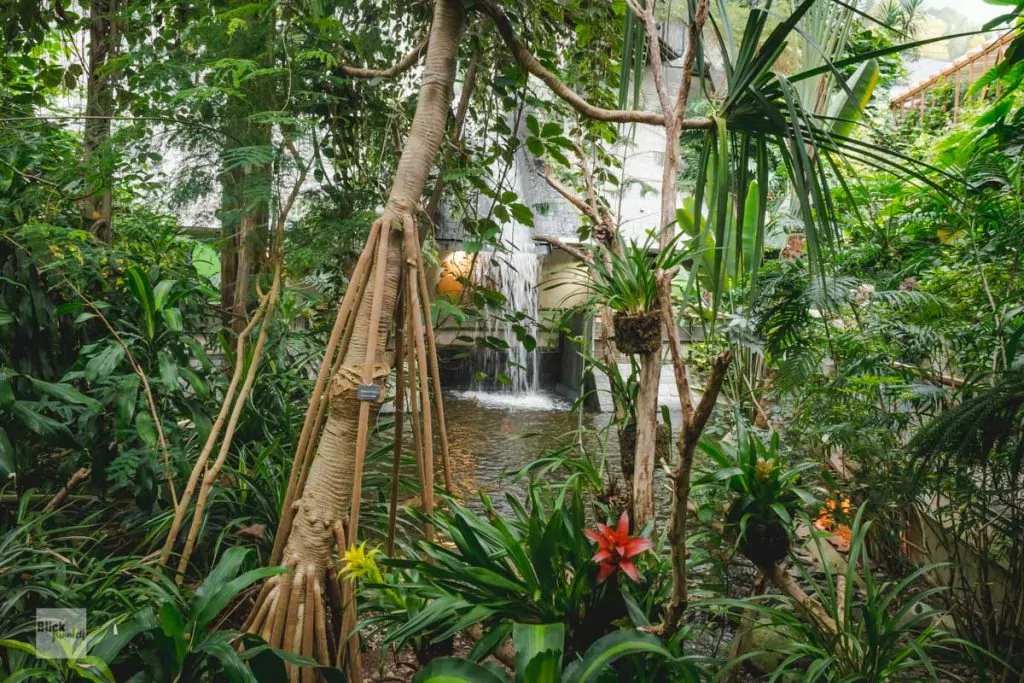

On an area of 7,000 square meters, visitors encounter a distant world, the rainforest, and can immerse themselves in its secrets. 20,000 different plant species can be admired, including mangroves, banana trees, orchids, bromeliads and many others. In some places there are large magnifying glasses through which you can study individual plants, their leaves or inflorescences even more closely.
